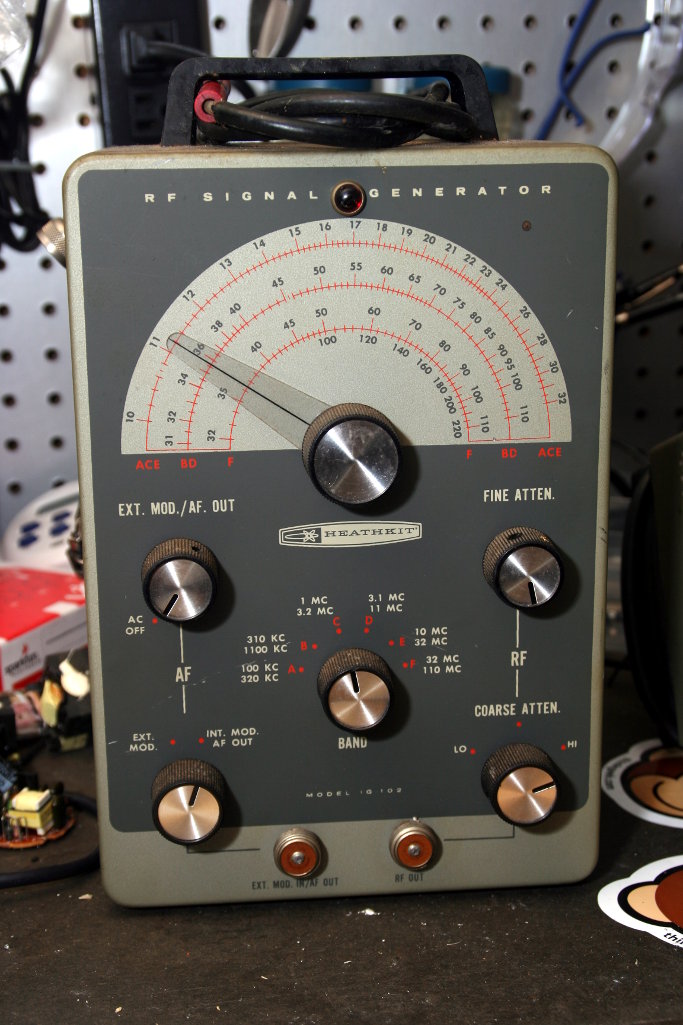Fortunately, my IG-102 came with the assembly manual. The IG-102 is roomy enough inside that it’s pretty easy to get in and probe around checking things.
Things I’ve found so far:
- Audio frequency (AF) output, which the manual says should be 400 Hz, is around 260 Hz. With the AF dial turned all the way up, the AF waveform measures about 20Vpp.
- I can reliably get RF output when the Coarse Atten switch is at the Hi position and the Fine Atten dial is all the way clockwise.
- Setting the Coarse Atten switch from Hi to the middle position drops the frequency by about a factor of 10 (according to my M3 frequency counter).
- Setting the Coarse Atten switch to the Lo position makes the RF output drop out.
- Turning the Fine Atten dial counter-clockwise ends up changing the frequency (unexpected) instead of changing the signal level.
- The band select dial is kind of fiddly. Sometimes when I switch to a different band, RF output drops out. Switching back and forth will usually bring the RF output back.
- Band A (100 – 300 kHz) is the most accurate.
- Bands B (310 – 1100 kHz) and C (1 MHz – 3.2 MHz) are about 50 kHz low.
- Band D (3.1 – 11 MHz) is low by 0.5 – 0.7 MHz.
- Band E doesn’t work.
- Band F (32 – 110 MHz) is reasonably accurate up to 50 MHz, but maxes out around 75 MHz.
V1 12AT7 pin voltages
| Pin | Spec | Measured |
|---|---|---|
| 1 | 65 | 62 |
| 2 | -4 | -5 |
| 3 | 0 | 0 |
| 4 | 6.3 VAC | 7 VAC |
| 5 | 6.3 VAC | 7VAC |
| 6 | 62 | 59.6 |
| 7 | -0.75 | -0.38 |
| 8 | 0 | 0 |
| 9 | 0 | 0 |
V2 6AN8 pin voltages
| Pin | Spec | Measured |
|---|---|---|
| 1 | 70 | 62.8 |
| 2 | -0.2 | -0.5 |
| 3 | 1.5 | 1.57 |
| 4 | 6.3 VAC | 7 VAC |
| 5 | 0 | 0 |
| 6 | 125 | 127 |
| 7 | 130 | 130.9 |
| 8 | 0 | 0 |
| 9 | 2.5 | 2.64 |
The RF signal sampled at pin 2 of the 12AT7 tube looks decent enough.
Need to do some more poking around with the oscilloscope to check the RF waveform at other places along the output path to see what’s happening before I try to figure out what bits I might need to replace.













